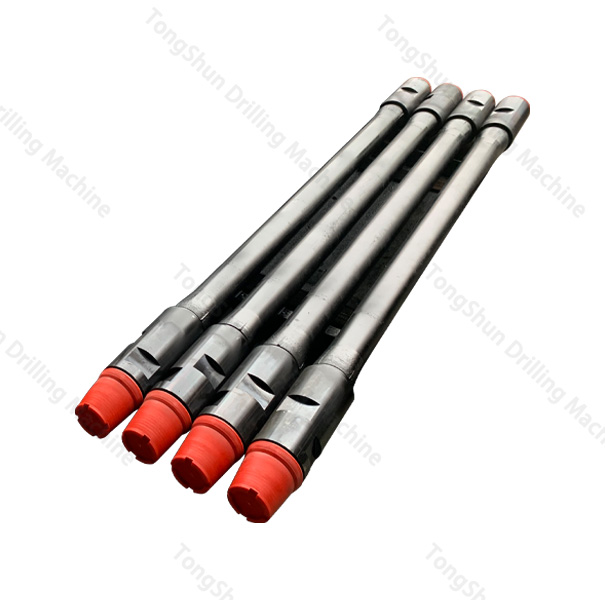Difference Between Drill Pipe and Heavy Weight Drill Pipe
In the realm of oil and gas drilling, the proper selection and use of equipment is critical to operational efficiency and safety. Among the essential components of a drill string, drill pipe and heavy weight drill pipe (HWDP) play pivotal roles. Understanding the differences between these two types of drill pipe is crucial for optimizing drilling performance and preventing downhole complications. This article delves into the detailed distinctions between drill pipe and heavy weight drill pipe, providing insights into their functions, specifications, and applications.
Understanding Drill Pipe
Drill pipe is a vital part of the drill string, used to transmit drilling fluid and rotational power from the surface to the drill bit. Typically made from high-strength steel, drill pipes are manufactured to withstand significant mechanical stresses and harsh drilling environments.

Key Characteristics of Drill Pipe
Material and Construction: Standard drill pipes are constructed from seamless steel tubes, ensuring robustness and durability. They are typically made from alloy steel grades such as S-135, which provides a good balance of strength and toughness.
Dimensions: Drill pipes come in various sizes, generally ranging from 2 3/8 to 6 5/8 inches in outer diameter (OD). The length of a drill pipe joint is usually around 30 feet.
Tool Joints: The ends of the drill pipe feature tool joints, which are threaded connections that allow the pipes to be screwed together. Tool joints are thicker and stronger than the pipe body, designed to endure high torque and bending stresses.
Function: The primary functions of drill pipe include transmitting rotational power to the drill bit, conveying drilling fluid, and providing the means to control the weight on bit (WOB).
Understanding Heavy Weight Drill Pipe (HWDP)
Heavy weight drill pipe serves as a transitional component between the drill pipe and the drill collars. It combines the flexibility of standard drill pipe with the rigidity of drill collars, making it a versatile and essential component in the drill string.
Key Characteristics of Heavy Weight Drill Pipe
Material and Construction: Similar to drill pipe, HWDP is made from high-strength alloy steel. However, HWDP features an increased wall thickness and is often manufactured with a center upset, which increases its bending strength.
Dimensions: HWDP typically has an outer diameter ranging from 2 7/8 to 6 5/8 inches, with lengths similar to standard drill pipe, generally around 30 feet.
Spiral Grooves: Many HWDPs are designed with spiral grooves along their length to reduce differential sticking, a common issue where the pipe becomes stuck against the wellbore wall due to pressure differences.
Function: HWDP acts as a flexible transition between the rigid drill collars and the more flexible drill pipe. It helps to manage the weight on bit more effectively and reduces the risk of fatigue failure in the drill string.
Comparative Analysis of Drill Pipe and HWDP
Weight and Strength
Drill Pipe: Lighter in weight compared to HWDP, which makes it more flexible and easier to handle. Its strength is sufficient for transmitting rotational power and drilling fluid under standard drilling conditions.
HWDP: Heavier and thicker, HWDP provides additional weight on bit without the rigidity of drill collars. This added weight helps in maintaining better directional control and reducing the risk of pipe buckling in deviated wells.
Flexibility and Durability
Drill Pipe: More flexible, allowing it to bend and flex as needed during drilling operations. This flexibility can sometimes lead to fatigue failures if not properly managed.
HWDP: Offers a balance between flexibility and rigidity, making it more durable under high-stress conditions. The increased wall thickness and center upset design enhance its resistance to bending and fatigue.
Application and Usage
Drill Pipe: Ideal for standard drilling operations where flexibility and ease of handling are priorities. It is extensively used in vertical and slightly deviated wells.
HWDP: Best suited for more complex drilling scenarios, such as high-angle or horizontal wells. Its ability to provide additional weight on bit without excessive rigidity makes it indispensable in challenging drilling environments.
Conclusion
In summary, while both drill pipe and heavy weight drill pipe are integral components of the drill string, their distinct characteristics and functions cater to different aspects of the drilling process. Understanding these differences allows for informed decision-making, optimizing drilling performance, and ensuring operational safety. Whether dealing with standard drilling operations or navigating the complexities of high-angle wells, the right choice of threaded drill pipe or HWDP can make a significant impact on the success of drilling endeavors.

评论
发表评论